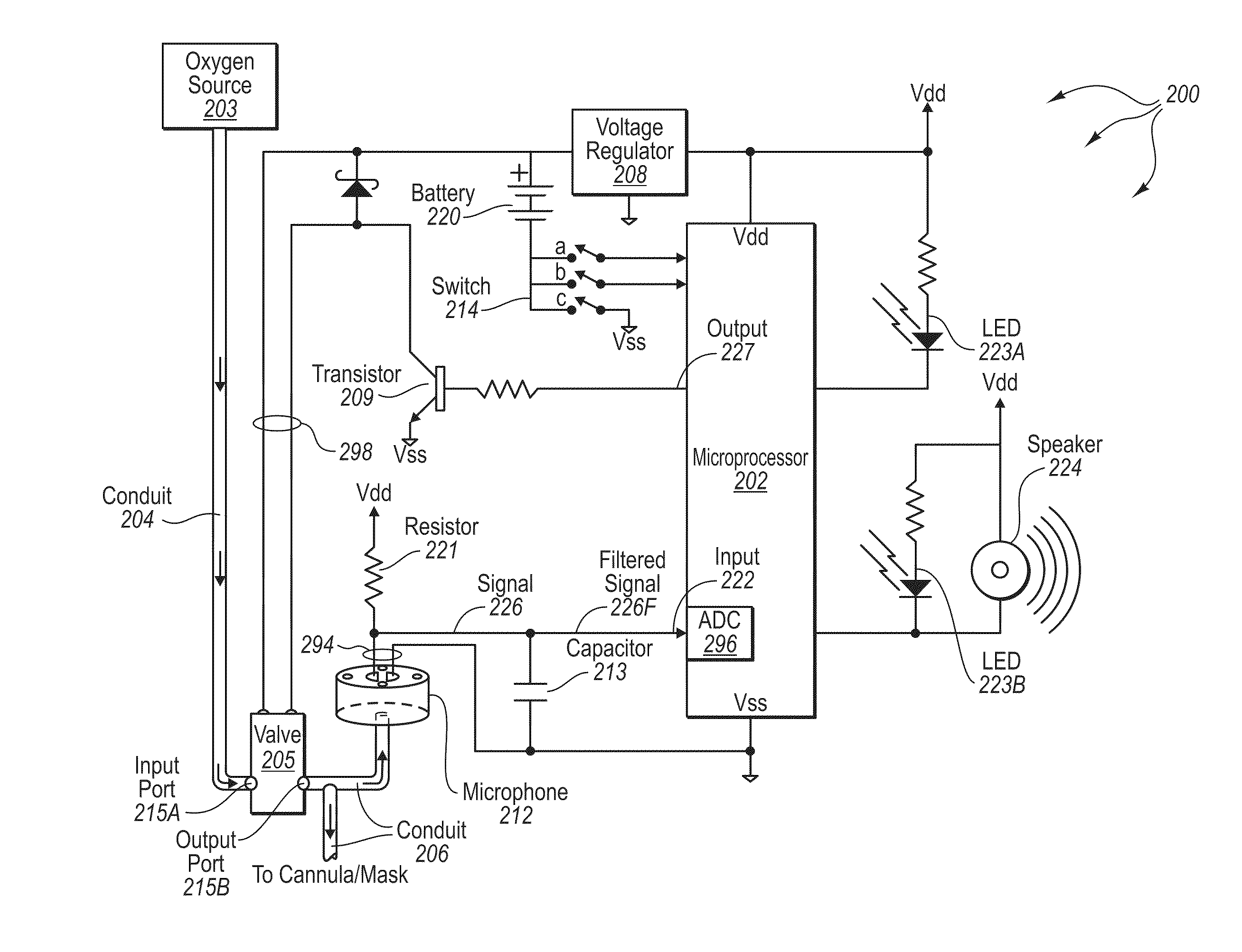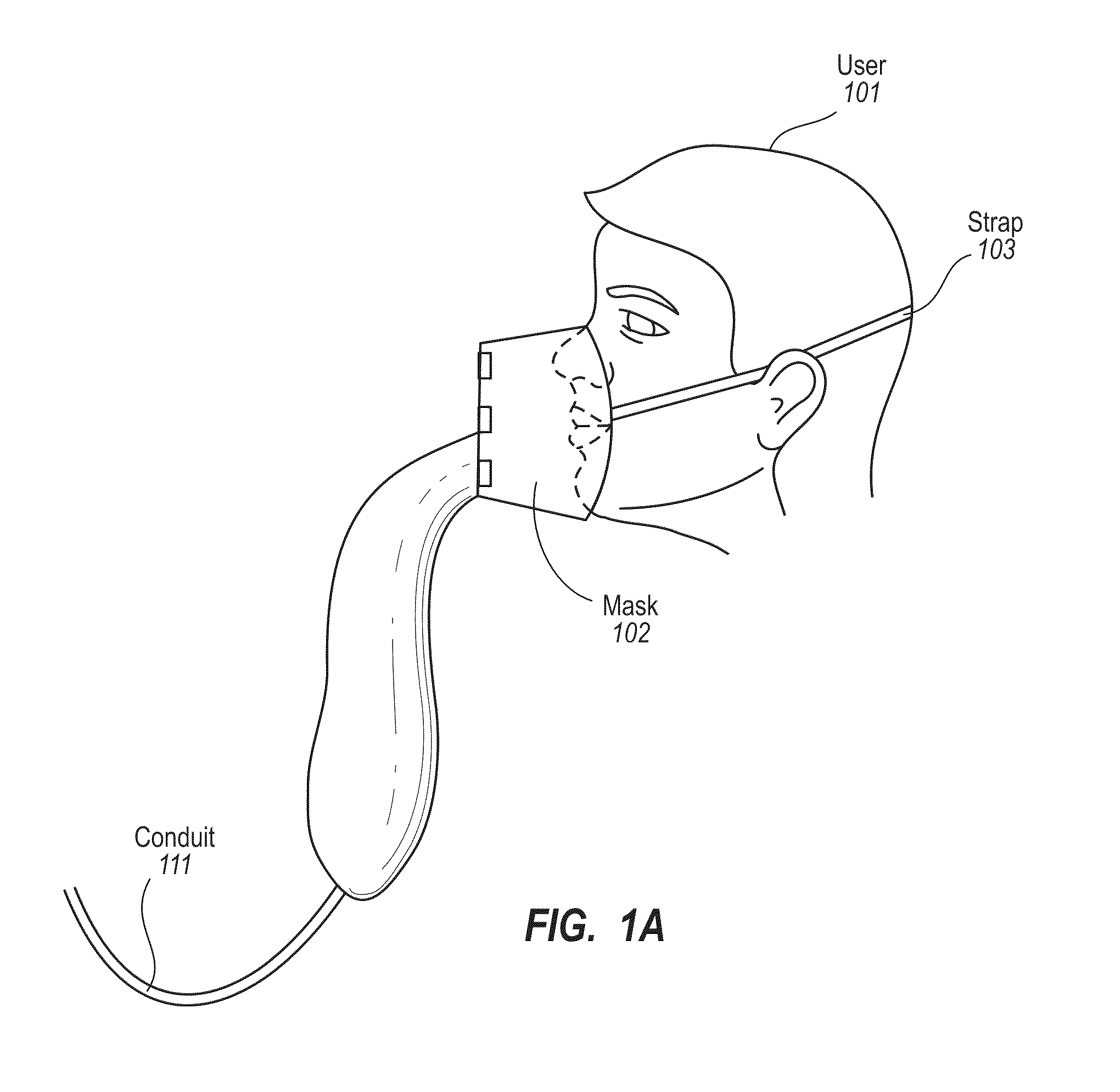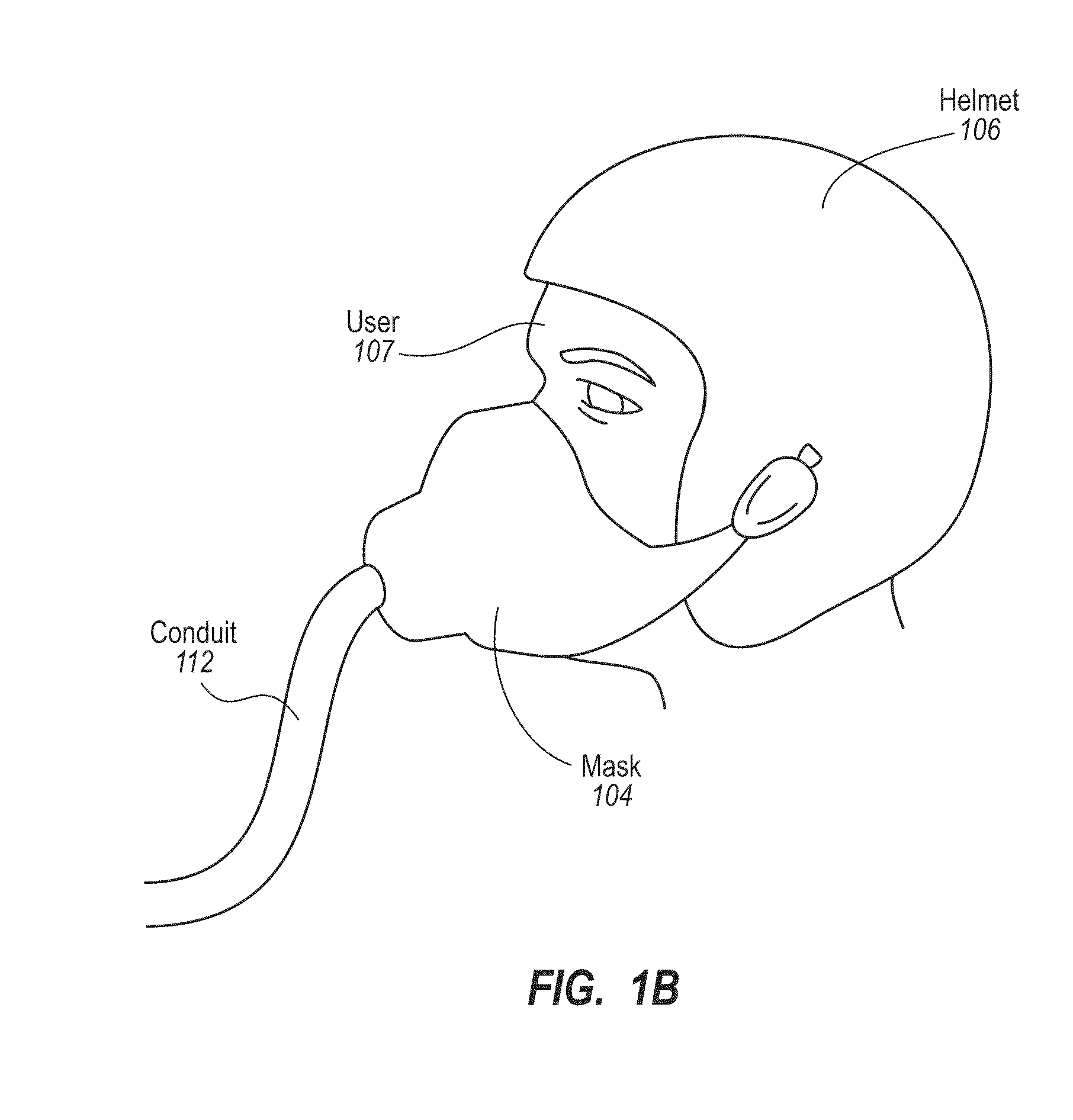Oxygen conserving oxygen delivery system
a technology of oxygen delivery system and oxygen supply system, which is applied in the direction of operating means/releasing devices of valves, instruments, respirators, etc., can solve the problems of wasting all oxygen supplied to the user during exhalation, low oxygen therapy efficiency, and high cost of long-term oxygen therapy, so as to prevent oxygen flow and conserve oxygen
- Summary
- Abstract
- Description
- Claims
- Application Information
AI Technical Summary
Benefits of technology
Problems solved by technology
Method used
Image
Examples
Embodiment Construction
[0037]The present invention extends to methods, systems, computer program products, and circuits for conserving oxygen during the delivery of oxygen to a user. In some embodiments, an oxygen delivery system operates to regulate a flow of oxygen during an inspiration event of a respiratory cycle. The system includes an oxygen source, an electronically controlled valve, a valve controller, a microphone, an oxygen delivery component (e.g., a cannula or facemask), a filter, and a microprocessor. A first portion of conduit pneumatically couples the oxygen source first pneumatic port of the electronically controlled valve. A second portion of conduit couples a second port of the electronically controlled valve to the oxygen delivery component and to a microphone.
[0038]The electronically controlled valve has at least an open setting and a closed setting. The open setting permits the flow of oxygen from the first port to the second port. The closed setting prevents the flow of oxygen from t...
PUM
 Login to View More
Login to View More Abstract
Description
Claims
Application Information
 Login to View More
Login to View More - R&D
- Intellectual Property
- Life Sciences
- Materials
- Tech Scout
- Unparalleled Data Quality
- Higher Quality Content
- 60% Fewer Hallucinations
Browse by: Latest US Patents, China's latest patents, Technical Efficacy Thesaurus, Application Domain, Technology Topic, Popular Technical Reports.
© 2025 PatSnap. All rights reserved.Legal|Privacy policy|Modern Slavery Act Transparency Statement|Sitemap|About US| Contact US: help@patsnap.com



